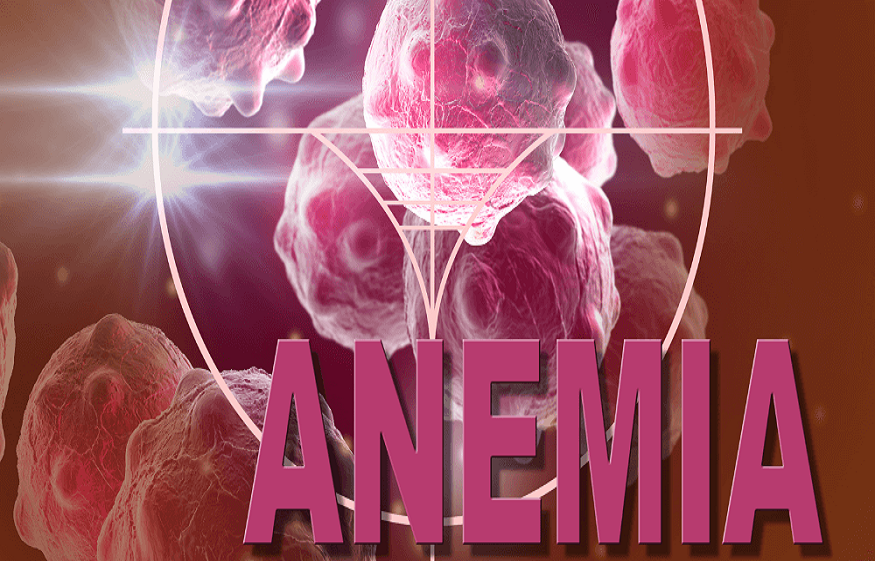Treatment for anaemia varies depending on what is causing the disease and may include taking medication, supplementation, or a diet rich in iron.
In more severe cases where it is impossible to control anaemia using these more straightforward ways, the doctor may suggest a blood or even bone marrow transfusion. However, these cases are rare and usually happen due to genetic diseases.
1. Sickle cell anaemia
In this type of anaemia, a genetic alteration changes the shape of red blood cells, reducing their ability to carry oxygen. Since it is impossible to correct the genetic alteration, treatment is usually done with the administration of oxygen and blood transfusions to regulate the levels of normal red blood cells in the blood.
In addition, the doctor may also prescribe analgesics or anti-inflammatory drugs, such as Diclofenac, to relieve the pain caused by this type of anaemia.
In the most severe cases, where it is complicated to control anaemia, treatments for cancer, such as Bone marrow transplantation or anticancer drugs, such as hydroxyurea, can still be used.
2. Iron deficiency anaemia
Iron deficiency anaemia happens when the body’s iron levels are too low, preventing the proper production of red blood cells.
Iron deficiency anaemia is more common in debilitated people, children who are growing and have Inadequate nutrition, and pregnant women. The best iron for the body is what is present in foods of animal origin, as the intestine better absorbs it. In addition, foods rich in vitamin C, such as oranges, kiwis and pineapples, help to increase the absorption of iron in the body and should also be included regularly in the diet.
Thus, treatment is done with iron supplements and dietary changes.
Food to increase iron
To increase iron levels and treat iron deficiency anaemia, it is advised to increase the consumption of foods such as:
- Red meat, in general;
- Chicken kidneys, liver or heart;
- Seafood and seafood;
- Black bean;
- Beet;
- Chard;
- Broccoli;
- Spinach.
After consuming any of these foods, immediate consumption of some food source of vitamin C is recommended to increase iron absorption,
3. Megaloblastic and pernicious anemia
These two types of anaemia occur due to a marked decrease in vitamin B12 levels in the body, being treated with vitamin B12 supplements and a diet richer in vitamin B12.
However, in some cases, this lack of vitamin B12 can happen due to the lack of an intrinsic factor, a substance in the stomach that ensures the absorption of vitamin B12. In these cases, injecting the vitamin directly into the vein is necessary because it will not be absorbed if it is ingested. Therefore, these injections can be kept for life.
List of foods rich in vitamin B12
The following details show the number of vitamin B12 in 100 g of each food:
Amount of vitamin B12 in 100g of food
grilled beef liver 100 mcg
cooked mussel 21 mcg
raw oysters 14 mcg
boiled chicken liver 21.1 mcg
Boiled beef heart 14 mcg
grilled sardines 12 mcg
roasted herring 9.6 mcg
boiled crab1 0.4 mcg
Grilled salmon 1.2 mcg
grilled trout 2.2 mcg
mozzarella cheese 1.7 mcg
whole cow’s milk 0.8 mcg
boiled chicken egg 0.5 mcg
Cooked chicken 0.3 mcg
grilled beef steak 2.0 mcg
grilled tuna 2.7 mcg
Vitamin B12 is present in foods in tiny amounts, which is why it is measured in micrograms, 1000 times smaller than 1 milligram.
4. Hemolytic anaemia
To treat hemolytic anaemia, which occurs due to the destruction of red blood cells by antibodies, the doctor usually recommends using drugs that reduce the action of the immune system, such as Cyclosporine and Cyclophosphamide, reducing the destruction caused by the antibodies.
Surgery may still be necessary in more severe cases to remove a piece of the spleen, as this organ is responsible for destroying blood cells.
5. Aplastic anaemia
Aplastic anaemia is an autoimmune disease that affects the bone marrow, reducing the production of red blood cells. In addition, the doctor may recommend blood transfusions to improve red blood cell levels in these cases. Still, a bone marrow transplant may also be necessary, mainly if the marrow can no longer produce healthy blood cells.



